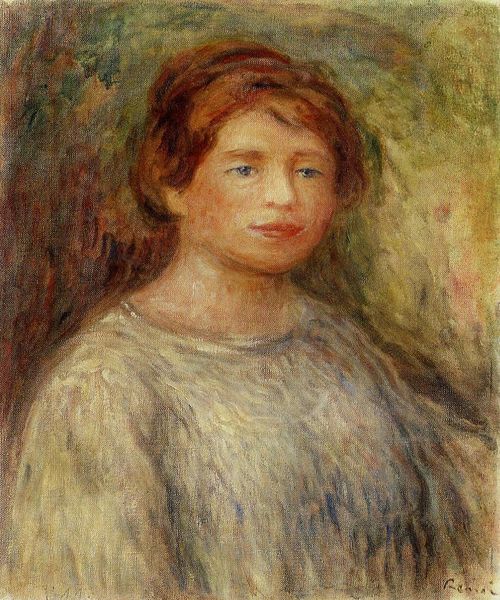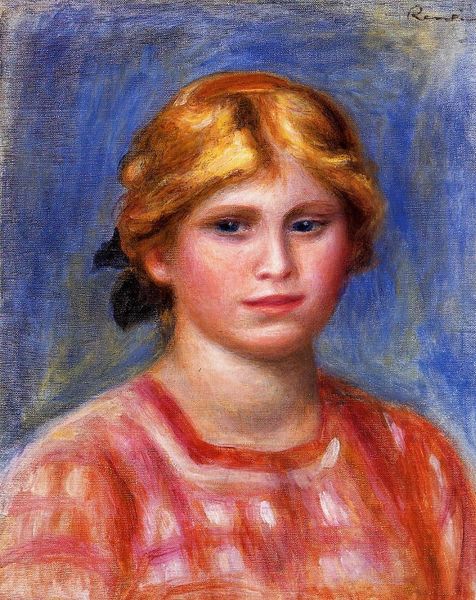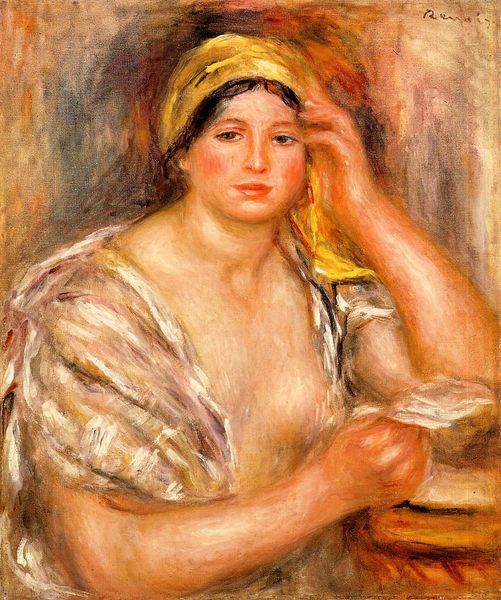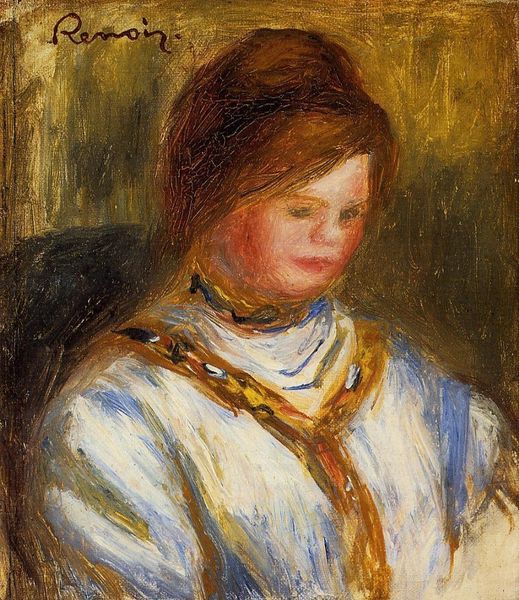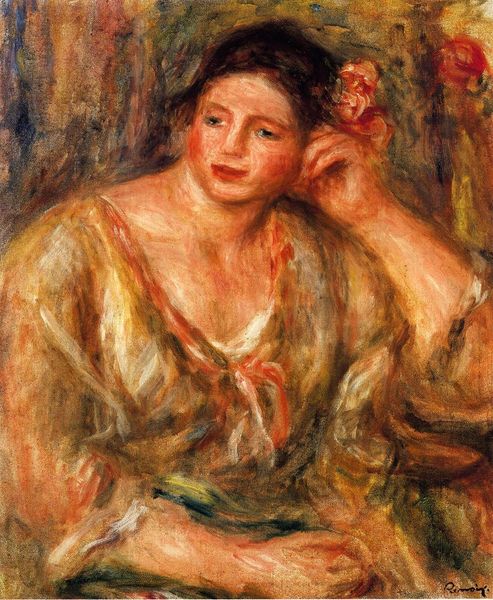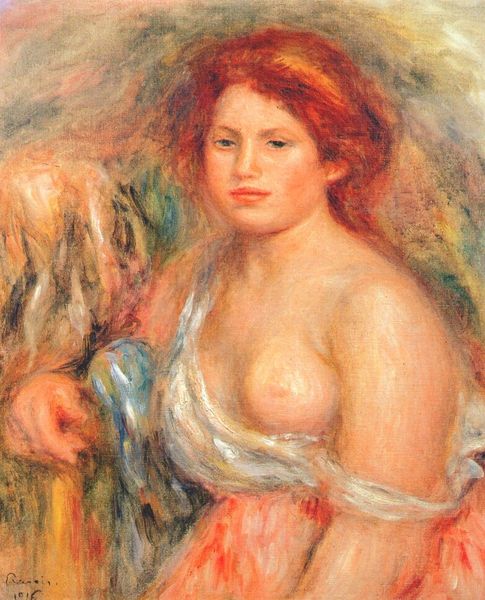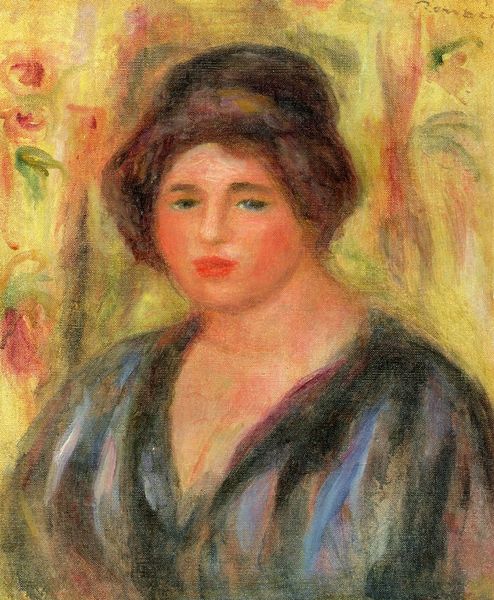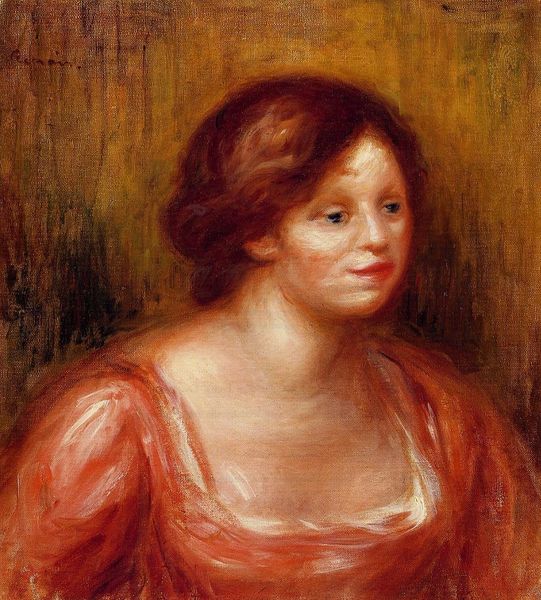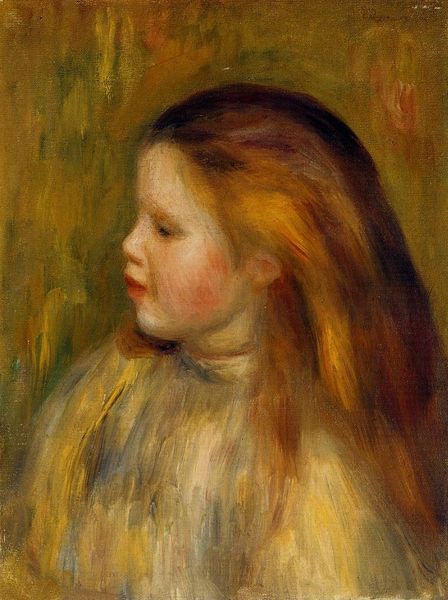
Copyright: Public domain
Curator: Here we see "Lucienne," an oil on canvas created by Pierre-Auguste Renoir in 1918. Editor: There’s something captivating in the softness of the light. It feels almost like a memory, the way the figure emerges from the gentle brushstrokes. Curator: Renoir was deeply embedded in the Impressionist and later Post-Impressionist movements. By 1918, though, he was quite ill with severe rheumatoid arthritis, making his technique more intuitive than ever. Consider also the world events happening while he was painting: the final year of WWI, and this intimate domestic scene feels quite removed from the brutality. Editor: The almost luminous quality to her complexion, set against the muted background, does create that effect. I’m drawn to the reddish hues in her hair - a vibrant and captivating visual element which adds to a feeling of feminine strength. Do you see any echoes in color symbology from Renoir's past, even? Curator: Renoir, interestingly, did struggle a bit at this period to exhibit or even sell his work to many critics or important private collectors who embraced more radical artistic avenues during the post-war, like Cubism, or Dada. Editor: And despite that the choice of portraiture remains, as it always has, laden with its own kind of social currency and symbolism? Capturing her likeness would immortalize her in art, which always brings forth that kind of cultural fascination, isn't that true? Curator: Absolutely. The very act of portraiture elevates the subject within a social framework, so, although on the surface it seems apolitical given his more domestic focus and classical inspirations by then, the work reinforces traditional cultural values. And indeed the intimate quality creates this connection with audiences, generations even, to create meaning to a human connection. Editor: So, "Lucienne" is then not merely a painting; it's a statement about personhood, made during an age that has faced collective identity challenges because of societal and political transformation and evolution. Thank you for giving depth to these points, by providing an iconographic study into that historical framing. Curator: A necessary reflection! The context surrounding an artwork can enrich its meaning immensely.
Comments
No comments
Be the first to comment and join the conversation on the ultimate creative platform.

